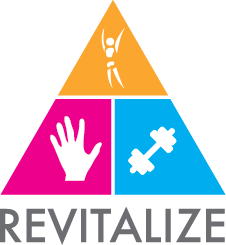How to Deal with Negative Thoughts: 2,000-Year-Old Wisdom Meets Modern Therapy
At the Revitalize Clinic in Gravesend, our approach to healing doesn’t stop at muscles and joints. As an Osteopath, Personal Trainer and ACT (acceptance commitment therapist), I often help patients navigate not only physical pain, but also the mental barriers that prevent them from making real, lasting progress. And one of the most common obstacles we encounter? Negative thoughts.
Whether you’re facing chronic pain, battling a mental health condition, or struggling with the motivation to get fitter and stronger, the narratives in your mind can become your greatest enemy.
Statements like:
-
“Will this ever get better?”
-
“Why is this happening to me?”
-
“I’m just not strong enough.”
-
“What’s the point?”
These phrases sound familiar because they’re universal. They are as old as our species. But what if we told you that a powerful way to manage them has also been around for thousands of years?
In this blog post, we’ll explore:
-
Why negative narratives appear in pain and personal development
-
The wisdom of Roman Emperor and Stoic philosopher Marcus Aurelius
-
How modern techniques like Acceptance Commitment Therapy (ACT) can help you work with—not against—your inner dialogue
-
Simple tools you can start using today to take back control
Pain and the Mind: More Connected Than You Think
At the Revitalize Clinic, we understand that the experience of pain isn’t just physical. It’s often heavily influenced by your mental and emotional state. Think about this: if you believe your pain will never get better, how likely are you to fully commit to rehab or follow through with a prescribed treatment plan?
The same goes for mental illness and fitness. Negative thoughts don’t just affect how you feel—they directly influence how you behave, recover, and grow. This is why so many of our clients at Revitalize benefit from a holistic approach, combining Osteopathy, personal training, and counselling techniques.
We’re here to help you not just fix the physical issue but challenge the mental roadblocks that hold you back.
Ancient Wisdom That Still Works: Marcus Aurelius and the Stoics
One of the most powerful tools I’ve come across as both a practitioner and a person is the Stoic philosophy of Marcus Aurelius, a Roman Emperor who wrote timeless meditations on how to live well, suffer less, and remain grounded amidst life’s chaos.
He said:
“There are four particular corruptions of the directing mind for which you must keep constant watch and eliminate them whenever you detect them. In each case applying one of these formulas: ‘This mental image is superfluous’; ‘This could weaken the bond of community’; ‘This would not be yourself speaking.’”
Essentially, Marcus was reminding himself—and us—that not every thought is useful. Some are superfluous, some are destructive, and some don’t even reflect our true selves.
It’s an early version of what modern psychology now calls metacognition—the ability to think about your thoughts. And it’s central to how we help our patients at the Revitalize Clinic regain their agency.

Acceptance Commitment Therapy (ACT): A Modern Upgrade
Acceptance Commitment Therapy (ACT) is a psychological approach that helps individuals accept their thoughts and feelings rather than fighting them. It’s been found especially useful in the treatment of chronic pain, anxiety, depression, and behaviour change—things we see every day at the clinic.
At its core, ACT teaches us to:
-
Notice our thoughts
-
Acknowledge them
-
Make space for them without judgement
-
Engage, choosing actions aligned with our values
Sound familiar? It’s exactly what Marcus Aurelius was doing 2,000 years ago.
Spot the Thought, Distance Yourself, Choose a Response
Here’s how you can apply these principles in your daily life, especially if you’re struggling with negative thoughts during your recovery, fitness journey, or even in day-to-day mental health:
1. Notice the Narrative
Most of us don’t realise how repetitive our internal monologue is. It’s not a wide variety of complex ideas. It’s usually the same handful of self-doubts, running on a loop like a hamster wheel.
The first step is to become aware. When a thought pops up—“I’ll never get better”—take a breath. You’ve just noticed it. That’s the first win.
2. Acknowledge
Start identifying these repetitive thoughts and give them names.
-
If your thought sounds like an overly critical parent or teacher, call it The Critic.
-
If it reminds you of a childhood bully, maybe it’s The Bully.
-
If it’s always pessimistic, maybe Eeyore.
Labelling helps to separate yourself from the thought. You are not the thought—you’re the person observing it.
3. Use the “Oh, it’s you again” Technique
This simple method involves writing down your recurring negative narratives and giving each one a label or character.
Then, when the thought reappears, you respond with:
“Oh, it’s you again. Hello.”
That’s it. No argument, no struggle, just a gentle recognition. And then you shift your focus to the next thing.
This gives you healthy distance and diffuses the emotional intensity. You begin to relate to the thought as just one part of you—not the whole of you.
4. Make It Silly (If You Want To)
One fun and effective technique is repeating the negative thought in a ridiculous voice. Try a cartoon character like Bugs Bunny or Yoda. This adds levity and disarms the power that thought has over you.
It might sound silly, but it works.
The Role of the Observer: Your Key to Resilience
When we create distance between ourselves and our thoughts, we’re able to become the observer. From this position, you’re no longer caught in the storm—you’re watching the clouds pass by.
This is not about suppressing thoughts or pretending everything’s fine. It’s about changing your relationship with those thoughts so that they don’t define your actions or identity.
Bringing it Together at Revitalize Clinic
At Revitalize Clinic, based in Gravesend, we use these powerful therapeutic methods as part of a multidisciplinary strategy. Whether you’re seeing one of our Osteopaths for pain, working with a Personal Trainer to improve your fitness, or talking with a Counsellor about emotional wellbeing, we ensure you’re supported on every level.
We take ancient wisdom and fuse it with cutting-edge science to provide long-lasting, meaningful change for over 10,000 people to date—and counting.
This is about empowering you to become mentally well, physically fit and pain free. Not just in the clinic, but in everyday life.
What You Can Do Next
If this post resonated with you, try the following:
-
Keep a Thought Log: Write down negative thoughts and assign them a character or label.
-
Practice the “Oh, it’s you again” response when these thoughts arise.
-
Look into Stoic Philosophy, ACT, and CBT for more insight.
-
Get in touch with us at the Revitalize Clinic if you want help applying these techniques to your life.
You don’t have to go through this alone. At Revitalize, we’ve got your back.
Contact Us
📞 Call us: 01474 356 284
📧 Email: info@revitalizeclinic.co.uk
🌐 Book online: www.revitalizeclinic.co.uk

